– By #Pioneer Auto Show
From beating the heat on a hot, summer day to cheering on your favorite football team, there isn’t much that an ice-cold Coke doesn’t pair perfectly with. With the bubbly beverage being such a part of everyday life, it may not be surprising to find out that Coca-Cola is one of the most well-known trademarks in the world, and is even the second most understood term on the planet, after “okay”. But do you ever stop to think about the history of Coca-Cola, or how it came to be consumed across the planet? Pop the top off a frosty Coke and keep on reading to learn the story behind one of the most successful businesses of all time.
Coca-Cola began with a man named John S. Pemberton trying to achieve the American Dream. Pemberton, who also went by the name “Doc”, was a pharmacist who had quite a few failed attempts at making a profit with various drugs he invented before he decided to try his hand at creating a beverage that he could sell to soda fountains, which were fast becoming the new hotspot for people to socialize. In 1886, while he was living in Atlanta, Georgia, Doc finally struck gold when he concocted Coca-Cola. Not knowing how to market the product, he hired Frank Robinson to name the drink and create a logo. The first year for the company was not so promising, with the company only selling an average of nine 6.5 ounce bottles per day. Sadly, Doc passed away in August of 1888, shortly before Coca-Cola achieved many triumphs that would make them the notable company that they are today.
Shortly before he had passed away, Pemberton sold his rights to the Coca-Cola Company to Asa Candler for a mere $55. In 1892, Candler had the company declared a Georgia Corporation, and a year later, the Coca-Cola script we still know and love was registered with the U.S. Patent Office. Investors were finally paid their first dividend at the company’s second annual meeting. By 1895, Coca-Cola was sold and drunk in every state in the United States. With business booming, the company had to finally move into their first building in 1898, and over the following twelve years, had to move five more times into larger spaces because of their steady growth.
Although the company was thriving under Candler’s direction, in 1899 he chose to sell most of his rights to Benjamin Thomas and Joseph Whitehead for just $1. Candler still maintained a level of involvement with the company until 1916, when he retired so that he could successfully run for mayor of Atlanta. Coca-Cola’s accomplishments can largely be attributed to the assertive marketing strategies that Asa Candler implemented during those early years.
The company continued to prosper while Thomas and Whitehead were in charge. The brand started using clever, innovative ways to market their increasingly popular product. Their use of celebrities in their ads started in 1900, when musical hall performer Hilda Clark appeared in ads for Coke on trays, posters, and bookmarks. Shortly after, their marketing budget grew to an astonishing $100,000, and reached the million mark shortly thereafter. Their increased marketing helped the company sell, for the first year ever, one million gallons of their drink in 1904. Coca-Cola was well on their way in becoming a household name.
In 1923, Coca-Cola introduced the first six-bottle carton, which was the first of its kind. It was a breakthrough that undoubtedly helped sales; cartons made carrying more bottles easier, thus increasing the amount of product people could bring home at one time. The recent boost of homes in America that had refrigeration also helped in making Coca-Cola an ice-cold treat that could be enjoyed regularly at home. The same year, Robert Woodruff became the company’s elected President, and had much of the power in the direction of the company for the next sixty years.
The rapidly growing corporation had been collaborating with athletes for about twenty years in their ads when, in 1928, they began their association with the Olympics, which continues to this day. That successful partnership set the pace for other prosperous endeavors that the company embarked on that secured their place as one of the top corporations in the world. The modern image of Santa Clause can even be attributed to Coca-Cola and their ads starting in 1931, depicting a white-haired, rosy-cheeked Santa guzzling a Coke. The year 1950 saw the fizzy drink make a couple grand debuts; first on Time magazine, which made it the first product ever to be featured on the magazine, then on televisions across the country on Thanksgiving with their very first commercial.
The 1950’s and 1960’s saw a dramatic increase in the products Coca-Cola offered its increasingly loyal consumers. The fruity Fanta, which was the first new beverage that the company produced, was introduced to the United States in 1960. Sprite followed soon after in 1961 and quickly became a favorite among fans. Those looking for a refreshing beverage that wouldn’t add calories to their diet finally got their prayers answered in 1963 when TaB was released, the company’s first diet drink. The containers in which the new products were available to customers also increased in variety during this time, and consumers were able to buy their favorite soda in a 10, 12, 16, or 26 ounce bottles. To make their product more portable, steel 12-ounce cans were introduced in 1960. Adding more diversity in the products helped the growing empire broaden its customer-base and ensure they were offering a little something for everyone to enjoy.
Coca-Cola continued to showcase their ingenious marketing techniques during this time. In 1969, the graphic look of the brand was updated to a red and white scheme and logo, which is still their look to this day. The popular “I’d Like to Buy the World a Coke” ad came out in 1971, which was released on radio and television and is still regarded as one of their most memorable ads. Their advertising allowed them to introduce an array of new beverages that were developed during that time, including Mr. Pibb, Hi-C, and Mello Yellow. The company rolled out Diet Coke at an extravagant event filled with celebrities, fitting for a company that had long since reached superstar status.
The success of Coca-Cola didn’t come without some bumps in the road. In 1985, the company changed the formula for their iconic, original Coca-Cola for the first time in 99 years. The marketed “New Coke” received immediate backlash, and the company was forced to return to the original formula in just 79 days. Largely regarded as the company’s biggest mistake, it didn’t cause enough damage to put a spoke in the wheel of the company’s ongoing success; the same year, Coke became the first soft drink consumed in space, aboard the space shuttle Challenger. Their popular sports drink, Powerade, became the official beverage of the Olympics in 1992, and in 1998, the company announced a one hundred year partnership with the NBA. The bit of fallout from the disastrous “New Coke” was quickly recovered from, and Coke once again emerged as one of the most successful businesses ever.
Through the recent years, Coca-Cola has persisted in maintaining a loyal, world-wide fan base by keeping their great-tasting original formulas, while also keeping up with the times. The company created a new type of fountain dispenser in 2009 called Coca-Cola Freestyle, an innovative machine that gives users the choice of over 100 different beverages, so anyone can find a refreshment perfectly suited to their taste buds. Coke has also hopped on the social media bandwagon, and their Facebook page consistently remains at the very top of the most “liked” pages on the website. Coca-Cola has perfected the art of keeping their brand fresh and modern, while also maintaining the nostalgia that many remember from their childhood.
There is no question that Coca-Cola has had a significant influence in the world, now come and see how they have made their mark right here in Murdo, South Dakota. Take a stroll through Pioneer Auto Show’s large collection of vintage Coca-Cola collectibles today and get up close and personal with the history of this revolutionary company.
Last Modified:




